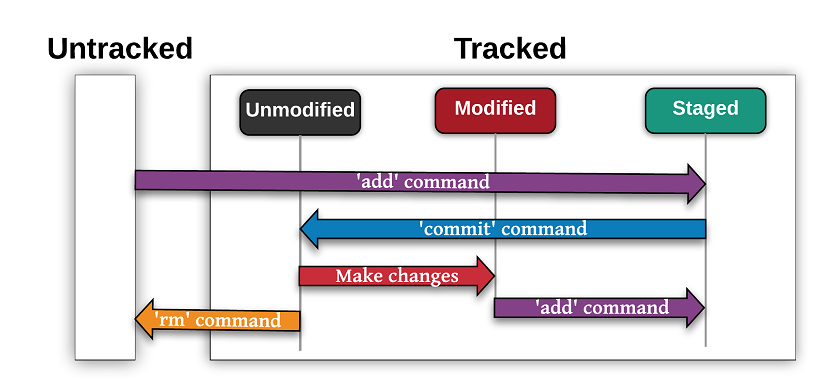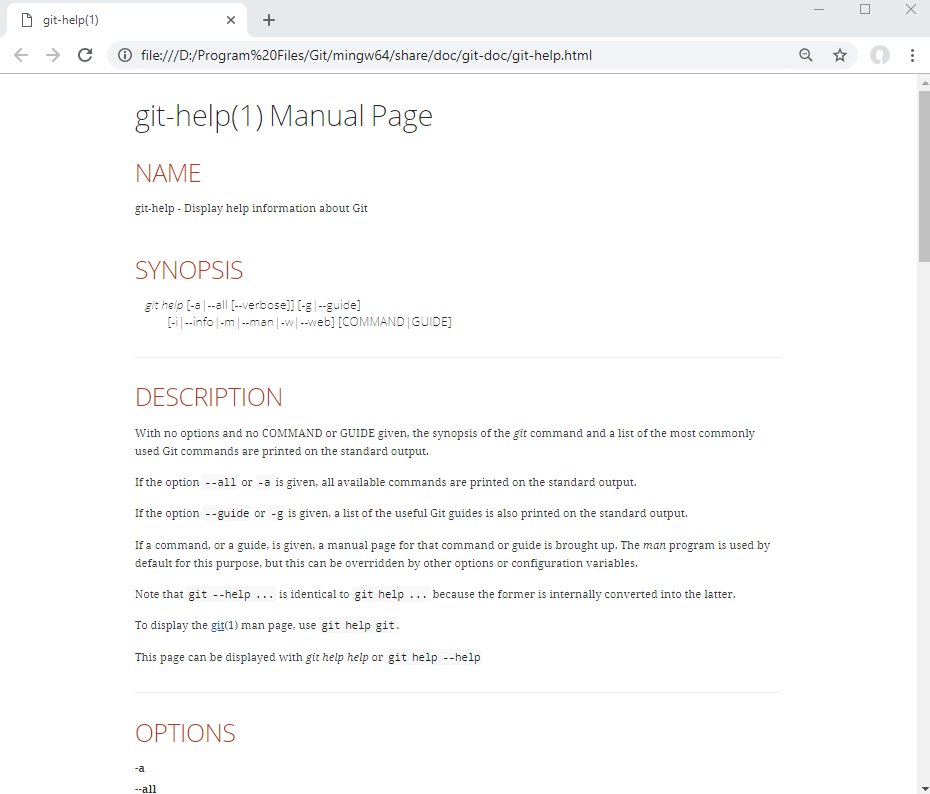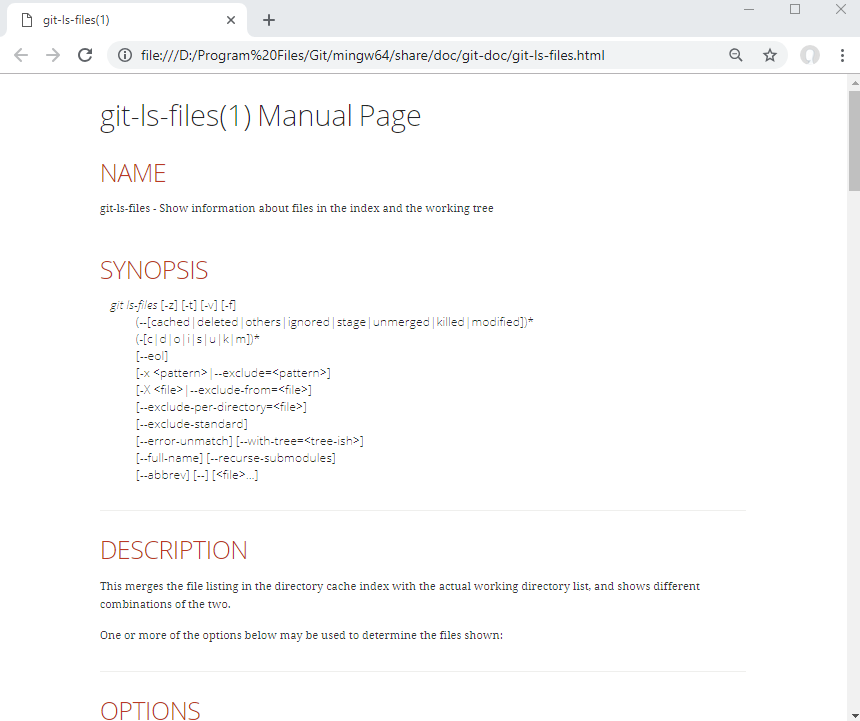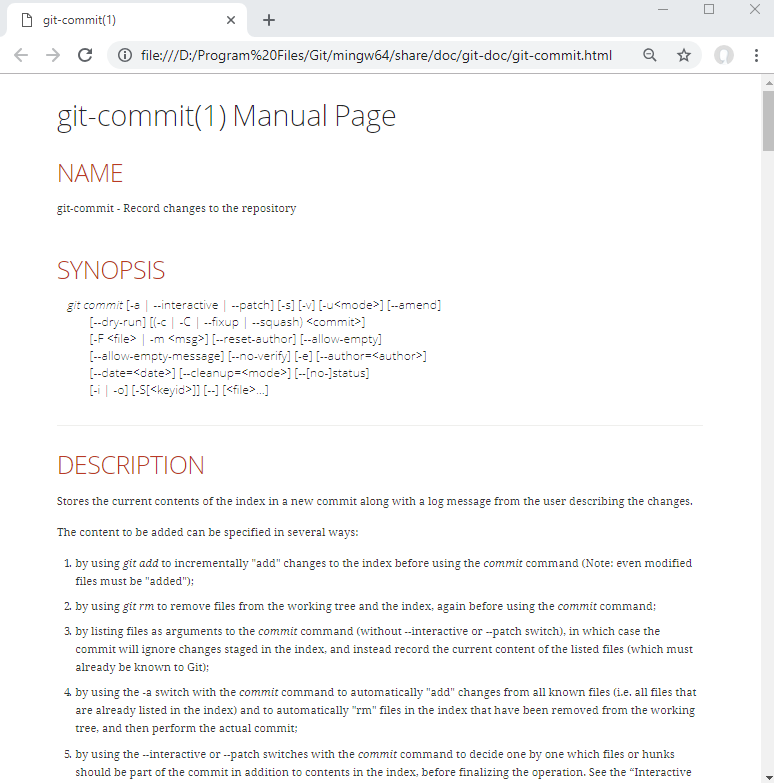This tutorial will quickly walk through the basics of Git.
What is Git?
Git is a distributed version-control system. In a distributed version-control system a developer follows the following basic workflow:
- The distributed repository is cloned by every developer. A developer clones it from another developer or from a central location (if there are a lot of developers then a central location is preferred).
- Once a developer has made a group of changes by committing changes to the local repository, he/she then pushes the changes to another developer or to the central location. Another developer can also pull your commits to see the changes.
- A developer's local repository is merged with the pulled commits. Git attempts to merge changes automatically, if there are conflicts then the developer resolves them manually.
This tutorial shows how to create a new repository and use the basic git commands.
Downloading and installing
Follow this quick tutorial to install Git on Windows. On Linux, git can be install by the following command:
sudo apt install git
Working with Git
Creating new repository
New repository can be created by command:
git init
Let's create an example directory 'example-project':
D:>mkdir example-project
D:>cd example-project
Creating git repository
D:\example-project>git init
Initialized empty Git repository in D:/example-project/.git/
D:\example-project>dir /a /b
.git
The folder .git is where the repository is stored. It contains the database of all metadata and version history etc.
Checking status
Following command shows working tree status. It also suggests the possible actions to perform next:
git status
D:\example-project>git status
On branch master
No commits yet
nothing to commit (create/copy files and use "git add" to track)
Adding new files
A new file can be added to git by using:
git add <theFile>
This command changes the state of a new file from untracked to tracked + staged.
An untracked file is not monitored by git.
A tracked file is monitored by git.
A staged file is committable i.e. to commit a file it must be staged first.
Creating a new file 'myfile.txt':
D:\example-project>echo hello> myfile.txt
Checking status:
D:\example-project>git status
On branch master
No commits yet
Untracked files:
(use "git add <file>..." to include in what will be committed)
myfile.txt
nothing added to commit but untracked files present (use "git add" to track)
Adding the file to the git staging:
D:\example-project>git add myfile.txt
Checking status again:
D:\example-project>git status
On branch master
No commits yet
Changes to be committed:
(use "git rm --cached <file>..." to unstage)
new file: myfile.txt
Listing files tracked by git
git ls-files
D:\example-project>git ls-files
myfile.txt
Commit changes
To commit changes to local repository:
git commit -m "my change description"
D:\example-project>git commit -m "first change"
*** Please tell me who you are.
Run
git config --global user.email "you@example.com"
git config --global user.name "Your Name"
to set your account's default identity.
Omit --global to set the identity only in this repository.
fatal: unable to auto-detect email address (got 'Joe@jpc.(none)')
If this is the first time your are committing, you will get the above message and commit will fail. Follow the instructions and enter your name and email address:
D:\example-project>git config --global user.name "Joe"
D:\example-project>git config --global user.email "joe@example.com"
Try committing again:
D:\example-project>git commit -m "first change"
[master (root-commit) 50abb3c] first change
1 file changed, 1 insertion(+)
create mode 100644 myfile.txt
Checking status:
D:\example-project>git status
On branch master
nothing to commit, working tree clean
When committing we can specify file(s) as well:
git commit myfile.txt -m "first change'//single file
git commit file1 file2 ... -m "my message" //many files
git commit -m "my message" //all files in current directory
Commit history
git log
D:\example-project>git log
commit 50abb3cf5d95776b018e68c2dacfb9083147c43a
Author: Joe <joe@example.com>
Date: Tue Nov 20 18:28:50 2018 -0600
first change
Make more changes
D:\example-project>echo more text >> myfile.txt
Since our file myfile.txt was previously staged, it is still tracked by git. So git knows that the file has changes.
Viewing difference
git diff <file-name>
D:\example-project>git diff myfile.txt
diff --git a/myfile.txt b/myfile.txt
index ce01362..f038e11 100644
--- a/myfile.txt
+++ b/myfile.txt
@@ -1 +1,2 @@
hello
+more text
Checking status:
D:\example-project>git status
On branch master
Changes not staged for commit:
(use "git add <file>..." to update what will be committed)
(use "git checkout -- <file>..." to discard changes in working directory)
modified: myfile.txt
no changes added to commit (use "git add" and/or "git commit -a")
Adding to git again:
D:\example-project>git add myfile.txt
Question: Why do we need to add the file again?
Answer: we need to use 'add' command in two scenarios:
- to make untracked file to tracked and staged.
- to make already tracked but modified files to be staged again.
Following diagram summarizes it:

The purpose of staging
The 'add' command only adds the content of the specified file(s) to staging at the time the add command is run.
After new changes to a file which was previously committed, we need to use 'add' command again only if we want the new changes to be included in coming commit. In other words, we selectively stage just those changes we want to be part of our next commit.
We can add multiple files to staging area. When we think all new 'staged' changes are ready, we can commit them together.
Let's continue with our example, and check the status:
D:\example-project>git status
On branch master
Changes to be committed:
(use "git reset HEAD <file>..." to unstage)
modified: myfile.txt
Committing:
D:\example-project>git commit -m "second change"
[master 892d3d6] second change
1 file changed, 1 insertion(+)
Log:
D:\example-project>git log
commit 892d3d660b4e0027fe18b0cd9b6cdd616dc546b5
Author: Joe <joe@example.com>
Date: Tue Nov 20 18:30:08 2018 -0600
second change
commit 50abb3cf5d95776b018e68c2dacfb9083147c43a
Author: Joe <joe@example.com>
Date: Tue Nov 20 18:28:50 2018 -0600
first change
Work Directory vs Git Directory
The staging data and committed data both are stored in
.git folder. This folder is generally called
Git Directory.
The folder where our working files reside, is called
Working Directory or
Git Work Tree.
Git Help
git help
D:\example-project>git help
usage: git [--version] [--help] [-C <path>] [-c <name>=<value>]
[--exec-path[=<path>]] [--html-path] [--man-path] [--info-path]
[-p | --paginate | -P | --no-pager] [--no-replace-objects] [--bare]
[--git-dir=<path>] [--work-tree=<path>] [--namespace=<name>]
<command> [<args>]
These are common Git commands used in various situations:
start a working area (see also: git help tutorial)
clone Clone a repository into a new directory
init Create an empty Git repository or reinitialize an existing one
work on the current change (see also: git help everyday)
add Add file contents to the index
mv Move or rename a file, a directory, or a symlink
reset Reset current HEAD to the specified state
rm Remove files from the working tree and from the index
examine the history and state (see also: git help revisions)
bisect Use binary search to find the commit that introduced a bug
grep Print lines matching a pattern
log Show commit logs
show Show various types of objects
status Show the working tree status
grow, mark and tweak your common history
branch List, create, or delete branches
checkout Switch branches or restore working tree files
commit Record changes to the repository
diff Show changes between commits, commit and working tree, etc
merge Join two or more development histories together
rebase Reapply commits on top of another base tip
tag Create, list, delete or verify a tag object signed with GPG
collaborate (see also: git help workflows)
fetch Download objects and refs from another repository
pull Fetch from and integrate with another repository or a local branch
push Update remote refs along with associated objects
'git help -a' and 'git help -g' list available subcommands and some
concept guides. See 'git help <command>' or 'git help <concept>'
to read about a specific subcommand or concept.
To list all git commands:
git help -a
D:\example-project>git help -a
usage: git [--version] [--help] [-C <path>] [-c <name>=<value>]
[--exec-path[=<path>]] [--html-path] [--man-path] [--info-path]
[-p | --paginate | -P | --no-pager] [--no-replace-objects] [--bare]
[--git-dir=<path>] [--work-tree=<path>] [--namespace=<name>]
<command> [<args>]
available git commands in 'D:/Program Files/Git/mingw64/libexec/git-core'
add get-tar-commit-id rebase--interactive
add--interactive grep receive-pack
am gui reflog
annotate gui--askpass remote
apply gui--askyesno remote-ext
archive gui.tcl remote-fd
askpass hash-object remote-ftp
bisect help remote-ftps
bisect--helper http-backend remote-http
blame http-fetch remote-https
branch http-push repack
bundle imap-send replace
cat-file index-pack request-pull
check-attr init rerere
check-ignore init-db reset
check-mailmap instaweb rev-list
check-ref-format interpret-trailers rev-parse
checkout legacy-rebase revert
checkout-index legacy-stash rm
cherry log send-email
cherry-pick ls-files send-pack
citool ls-remote serve
clean ls-tree sh-i18n--envsubst
clone mailinfo shortlog
column mailsplit show
commit merge show-branch
commit-graph merge-base show-index
commit-tree merge-file show-ref
config merge-index stage
count-objects merge-octopus stash
credential merge-one-file status
credential-manager merge-ours stripspace
credential-store merge-recursive submodule
credential-wincred merge-resolve submodule--helper
cvsexportcommit merge-subtree subtree
cvsimport merge-tree svn
daemon mergetool symbolic-ref
describe mktag tag
diff mktree unpack-file
diff-files mv unpack-objects
diff-index name-rev update
diff-tree notes update-git-for-windows
difftool p4 update-index
difftool--helper pack-objects update-ref
fast-export pack-redundant update-server-info
fast-import pack-refs upload-archive
fetch patch-id upload-pack
fetch-pack prune var
filter-branch prune-packed verify-commit
fmt-merge-msg pull verify-pack
for-each-ref push verify-tag
format-patch quiltimport web--browse
fsck range-diff whatchanged
fsck-objects read-tree worktree
gc rebase write-tree
git commands available from elsewhere on your $PATH
flow lfs
'git help -a' and 'git help -g' list available subcommands and some
concept guides. See 'git help <command>' or 'git help <concept>'
to read about a specific subcommand or concept.
To get help on a particular command, use --help option
D:\example-project>git help --help
That opens a help web page:

D:\example-project>git ls-files --help

Instead of using:
git <command-name> --help
we can also use:
git help <command-name>
D:\example-project>git help commit

Concept guides
git help -g can be used to get the list of some concept guides:
D:\example-project>git help -g
The common Git guides are:
attributes Defining attributes per path
cli Git command-line interface and conventions
core-tutorial A Git core tutorial for developers
cvs-migration Git for CVS users
diffcore Tweaking diff output
everyday A useful minimum set of commands for Everyday Git
glossary A Git Glossary
hooks Hooks used by Git
ignore Specifies intentionally untracked files to ignore
modules Defining submodule properties
namespaces Git namespaces
repository-layout Git Repository Layout
revisions Specifying revisions and ranges for Git
tutorial A tutorial introduction to Git
tutorial-2 A tutorial introduction to Git: part two
workflows An overview of recommended workflows with Git
'git help -a' and 'git help -g' list available subcommands and some
concept guides. See 'git help <command>' or 'git help <concept>'
to read about a specific subcommand or concept.
Let's get help on 'tutorial'
D:\example-project>git help tutorial

|